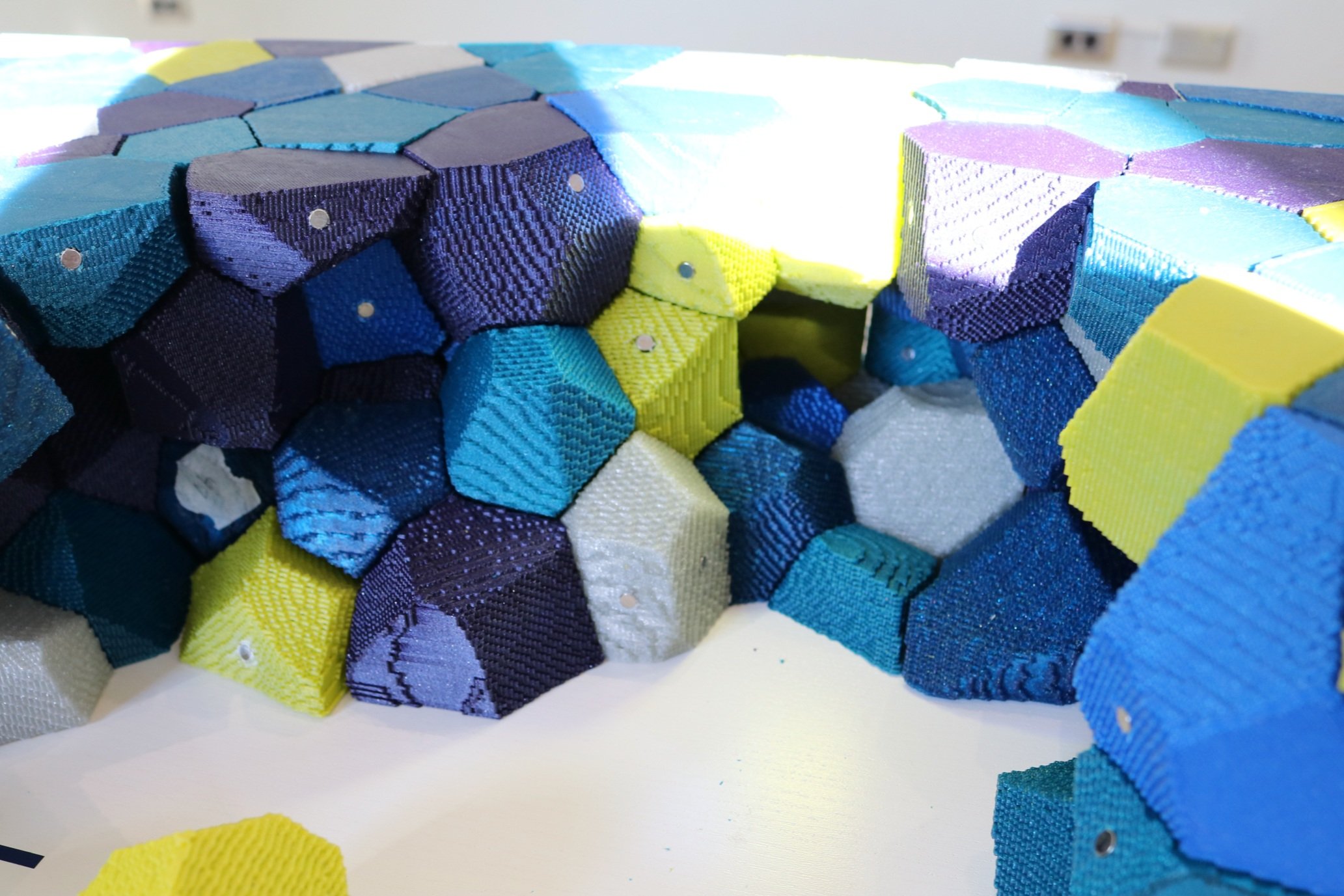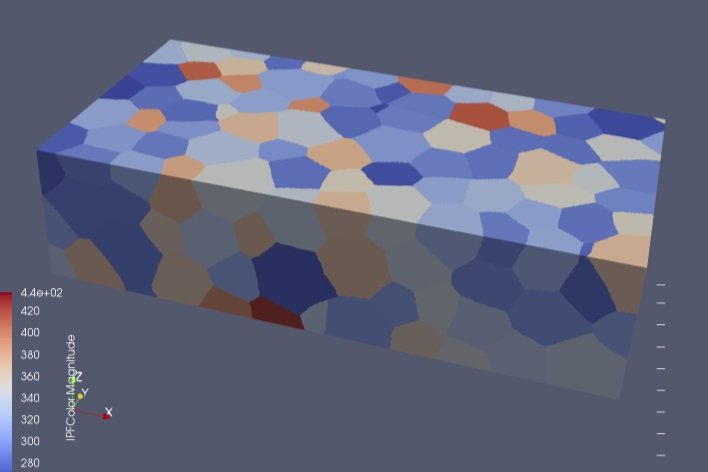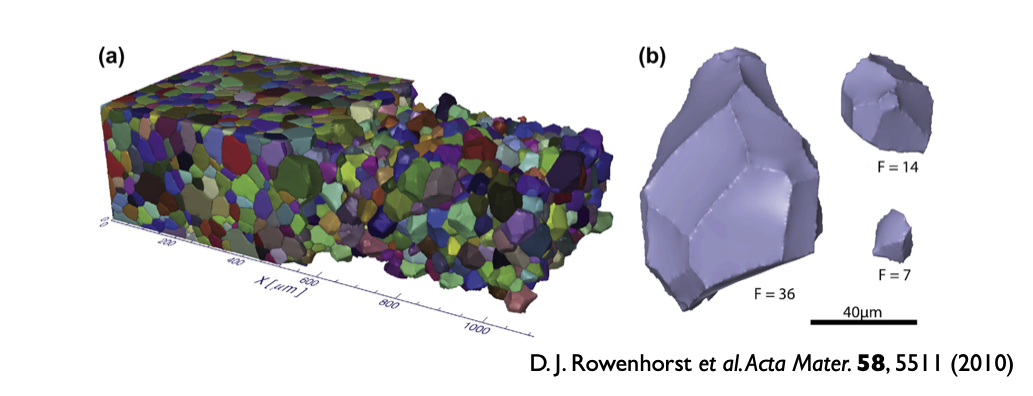Impossible Puzzle
Explorations from the Hopkins Extreme Materials Institute (HEMI) artist residency.
Date
Fall 2018
Partners
Todd Hufnagel
Disciplines
Material Science, Digital Fabrication
Location
Johns Hopkins University
The impossible grain boundary puzzle, is a representation of the grain structure of copper-based material. Grains (also called crystallites) make up the microstructure of material and speak to the repeating crystalline patterns of atoms that appear in metals and other materials as they solidify. Grain boundary research studies what happens between two grains as defects emerge, often after a material has heated up and cooled down, and the repeating crystalline pattern is disrupted.
In the labs of Professor Todd Hufnagel, they study the 3d microstructure of materials in order to better understand and control material behavior under conditions such as high temperature or high impact. One technology his lab uses is called high-energy diffraction microscopy (HEDM). In this process, material specimens are observed using x-rays from a synchrotron source while the sample is rotated through 360 degrees.
The ensuing diffraction patterns (or the way the x-rays are scattered by the grains) are then used to algorithmically reconstruct a 3d model of each individual grain in the sample creating a set of material statistics for further study.
The PUZZLE pieces are 100,000 times the size of actual metal GRAINS
Using software called Dream3d, I was able to generate statistics for an imaginary material specimen, based on the 3d microstructure of copper. Using the generated copper grain statistics, I created STL files (a common file format for 3d printing) for each grain and 3d printed the grains in a corn-based plastic called PLA (polylactic acid).
Copper is a literal representation of the typical 3d grains found in a specimen of copper and the grain boundaries between each grain. It is presented as a pile of deconstructed grains that have been magnified roughly 100,000 times the original size and 3d printed so that each grain is tangible and able to be connected to its neighboring grains through magnets. The puzzle challenge is to reconstruct the material sample (a rectangular solid) from the pile of 274 grains. Spoiler alert: it is NOT easy.
If you’d like to try 3d printing your own version of the puzzle, and are fully cleared by your mental health care team, you can download the files here.
My imaginary material and its grains
Actual grain boundaries of a metallic alloy
Concept and Fabrication
Jenna Frye
Photo Credit
Jess Ader
Grant Funding
Extreme Arts Residency with Hopkins Extreme Materials Institute
Special Thanks
Todd Hufnagel and research team, David Elbert, and Mike Groeber





